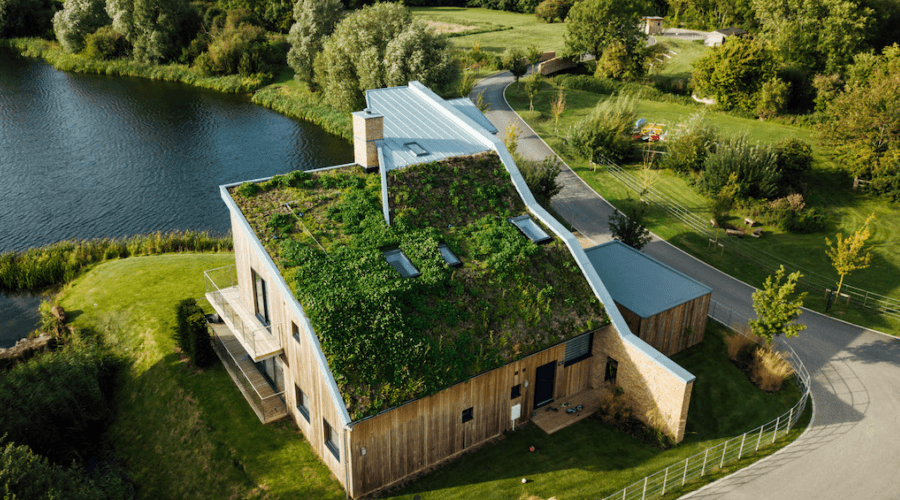With rising energy costs and growing environmental awareness, eco-friendly home renovations are no longer just trendy—they’re essential. Homeowners today are investing in green home upgrades not only to reduce their environmental footprint but also to create energy-efficient homes that save money in the long run. From solar panels to sustainable materials, these modern upgrades are changing how we live and build for the future.
Whether you’re planning a small remodel or a full-scale renovation, the right upgrades can make your home healthier, more comfortable, and dramatically more efficient. Here’s your complete guide to the top eco-friendly home renovations in 2025 that help you save money and energy—all while protecting the planet.
1. Install Solar Panels for Sustainable Energy
When it comes to green home upgrades, solar panels are one of the most impactful investments you can make. By converting sunlight into electricity, solar power reduces your reliance on fossil fuels and slashes your utility bills.
Modern solar systems, such as those offered by Tesla Solar and SunPower, are more efficient and affordable than ever. Depending on your location, you can even sell excess electricity back to the grid through net metering, turning your roof into a source of passive income.
According to the U.S. Department of Energy, homeowners who install solar panels can save up to 75% on electricity costs over the system’s lifetime. With government incentives and tax credits available in many regions, the payback period for solar installation has never been shorter.
Pro Tip: Before installation, assess your roof’s orientation and sunlight exposure. South-facing roofs typically generate the most energy.
2. Upgrade to Energy-Efficient Windows
Old, drafty windows are one of the biggest culprits for energy loss in homes. Upgrading to double or triple-pane energy-efficient windows can drastically reduce heating and cooling costs while improving indoor comfort.
Look for products certified by ENERGY STAR or those featuring low-emissivity (Low-E) glass, which reflects heat while allowing natural light to pass through. These windows minimize UV radiation, protecting your furniture and floors from fading.
For homeowners on a budget, consider adding window films or weather stripping to enhance insulation. These small upgrades can make a significant difference in your home’s energy efficiency.
Pro Tip: Combine energy-efficient windows with insulated curtains for even greater savings during winter and summer months.
3. Install Smart Home Thermostats
Smart thermostats are one of the simplest yet most effective eco-friendly home renovations. They automatically adjust your heating and cooling based on your schedule and preferences, saving energy without sacrificing comfort.
Devices like Google Nest and ecobee use AI technology to learn your habits and optimize your home’s climate control. According to studies, they can reduce energy consumption by up to 15%, translating to hundreds of dollars in annual savings.
Additionally, these smart systems can be integrated with other connected devices for full automation. For instance, you can link your thermostat with your blinds or ceiling fans to maintain perfect indoor temperatures efficiently.
Internal link suggestion: To learn more about automating your living space, read our post on How to Create a Fully Automated Smart Garden in 2025.
4. Switch to LED Lighting
Lighting accounts for nearly 10% of a home’s energy use. Replacing old incandescent bulbs with LED lights is one of the easiest green home upgrades you can make. LEDs use up to 80% less energy and last 25 times longer than traditional bulbs.
Today’s LED options come in a variety of color temperatures and designs to suit any aesthetic. You can even find smart LEDs that adjust brightness automatically or can be controlled via voice command through Amazon Alexa or Google Home.
Pro Tip: Combine LED lighting with motion sensors in less-used areas like hallways and garages to maximize energy savings.
5. Improve Home Insulation
Proper insulation is crucial for energy-efficient homes. A well-insulated home maintains temperature consistency, reducing the strain on heating and cooling systems. Common insulation areas include walls, attics, floors, and basements.
Modern eco-friendly materials such as cellulose insulation (made from recycled paper) or sheep’s wool insulation offer excellent performance while minimizing environmental impact. These sustainable materials outperform traditional fiberglass by providing better moisture regulation and thermal resistance.
For an added layer of efficiency, consider air-sealing cracks and gaps around doors and windows with caulk or foam. The EPA estimates that sealing leaks can save homeowners up to 20% on annual energy bills.
Pro Tip: Have a professional energy audit done before renovating to identify where your home loses the most heat or cool air.
6. Use Sustainable Building Materials
If you’re planning a major remodel, choosing sustainable materials can significantly enhance your home’s eco-footprint. Bamboo, reclaimed wood, cork, and recycled metal are durable, renewable, and add natural beauty to your space.
For countertops, opt for recycled glass or composite surfaces instead of granite or marble. Eco-friendly paints and finishes, such as those offered by Benjamin Moore Eco Spec, emit fewer volatile organic compounds (VOCs), improving indoor air quality.
These sustainable materials are not only better for the planet but often more affordable in the long term due to their durability and low maintenance requirements.
Internal link suggestion: Learn more about building sustainable homes in our article Net-Zero Homes: The Future of Sustainable Living.
7. Upgrade to Energy-Efficient Appliances
Replacing old appliances with ENERGY STAR-certified models is a cornerstone of eco-friendly home renovations. From refrigerators and dishwashers to washing machines and water heaters, modern appliances use advanced technologies to consume less energy and water.
For example, Whirlpool and LG now offer high-efficiency washers that use 50% less water than standard models. Similarly, smart refrigerators can optimize cooling and alert you when maintenance is needed.
According to Energy.gov, upgrading to modern appliances can save an average household over $500 annually on utility costs.
Pro Tip: When shopping, look for the EnergyGuide label—it provides an estimated yearly operating cost to help you compare savings.
8. Add a Green Roof or Living Wall
For homeowners looking to make a statement, green roofs and living walls are among the most innovative green home upgrades. They not only add natural beauty but also improve insulation and air quality.
A green roof, covered in vegetation, acts as a natural insulator, reducing heat absorption and lowering cooling costs. Meanwhile, vertical gardens or living walls inside your home help purify the air and reduce humidity.
Many urban buildings are adopting this trend, with stunning examples featured on Architectural Digest. Beyond aesthetics, these installations contribute to urban biodiversity and mitigate the heat island effect.
Pro Tip: Green roofs may qualify for tax incentives or grants in certain cities, making them both eco-friendly and financially rewarding.
9. Invest in Water Conservation Systems
Water efficiency is often overlooked in eco-friendly home renovations. Installing low-flow fixtures, dual-flush toilets, and water-saving showerheads can dramatically reduce your water usage without compromising comfort.
Rainwater harvesting systems are another excellent addition. They collect and store rainwater for use in irrigation or even household cleaning, cutting down on your water bills. Additionally, greywater recycling systems reuse water from sinks and showers for non-drinking purposes.
For more advanced setups, companies like Aquatech and RainHarvest provide sustainable water management solutions for homes and businesses alike.
Pro Tip: Combine water conservation systems with drought-resistant landscaping for a fully sustainable outdoor design.
10. Replace Traditional Heating with Heat Pumps
Heat pumps are revolutionizing energy-efficient homes by providing both heating and cooling in one unit. Instead of generating heat, they transfer it—making them up to four times more efficient than traditional HVAC systems.
Modern models, like those offered by Mitsubishi Electric and Carrier, are designed to work efficiently even in cold climates. Over time, they can cut your energy bills significantly and reduce your home’s carbon footprint.
Pro Tip: Look for systems that qualify for energy rebates or government incentives to offset installation costs.
Final Thoughts: A Smarter, Greener Future Starts at Home
As homeowners become more environmentally conscious, eco-friendly home renovations are no longer just about saving energy—they’re about creating healthier, more sustainable living spaces. From smart thermostats and solar panels to sustainable materials and green roofs, each upgrade contributes to a cleaner planet and lower energy bills.
With global green home upgrades becoming more affordable and accessible, there’s never been a better time to invest in sustainability. By making thoughtful changes today, you’re not just improving your home—you’re building a legacy of efficiency, comfort, and environmental responsibility for future generations.
To explore more sustainable living ideas, check out Net-Zero Homes: The Future of Sustainable Living and Why Tiny Homes Are Becoming Big Business in 2025.




